10 Interesting Facts About Seychelles
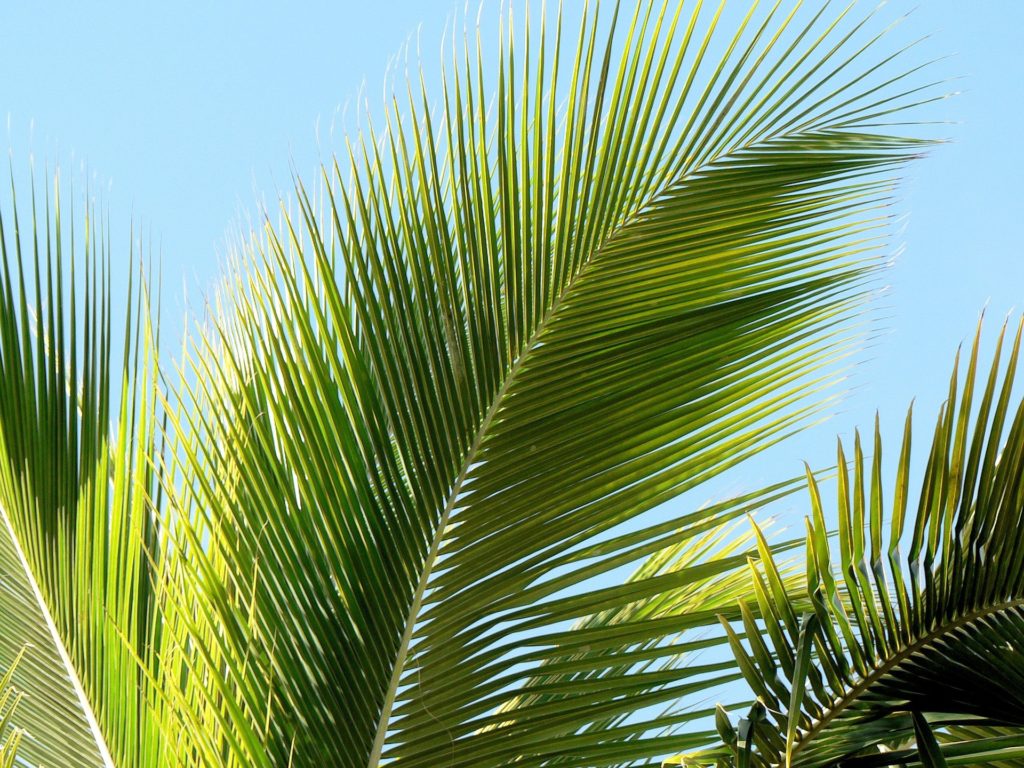

For many people, the Seychelles is merely a beautiful tropical island holiday destination. And while this is absolutely true, there are so many things about Seychelles that make it incredibly unique. Here are 10 interesting facts about the Seychelles that many might not be aware of.
Many Seychellois are also unaware of this fact, but the Seychelles was once inhabited by saltwater crocodiles. These predators are the largest living reptile, with the males capable of being weighed in at over 500kgs. They are also known to reach lengths of up to 4.9 m.
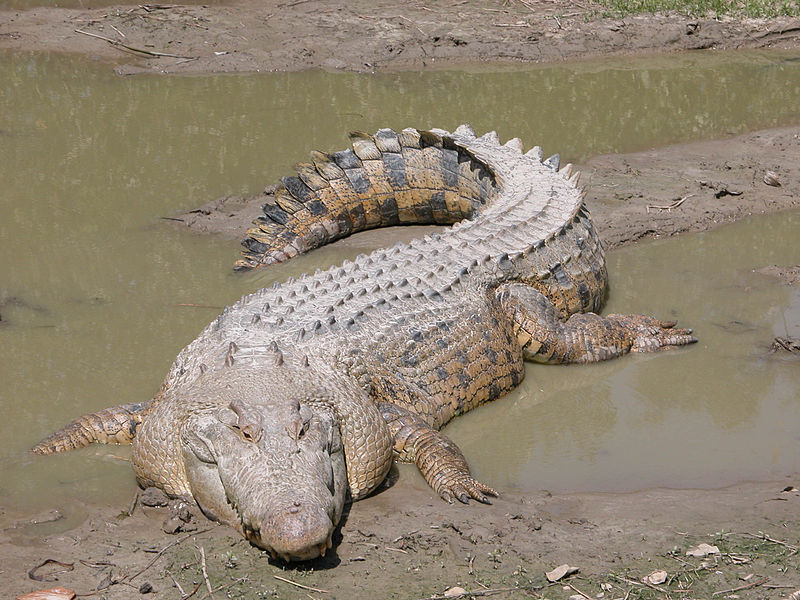
Saltwater Crocodile, Obtained from Molly Ebersold of the St. Augustine Alligator Farm, Public domain, via Wikimedia Commons
Early visitors to Seychelles reported seeing these large reptiles on their journeys between the islands. In fact, they were the most-sighted creature along the coasts.
It is largely believed that human contact along with ensuing environmental changes is what led to the extinction of these huge animals. Much later, it was discovered that these saltwater crocodiles were endemic to the Seychelles and were not the Nile crocodile as previously believed. Saltwater crocodiles are still found in parts of Australia and South-East Asia.
Esmeralda, (a male despite the name), is the world’s heaviest land tortoise living in the wild. He weighs in at over 300kgs and is believed to be over 150 years old. Esmeralda resides on Bird Island in the Seychelles along with a number of other tortoises, thousands of birds, as well as other animals.
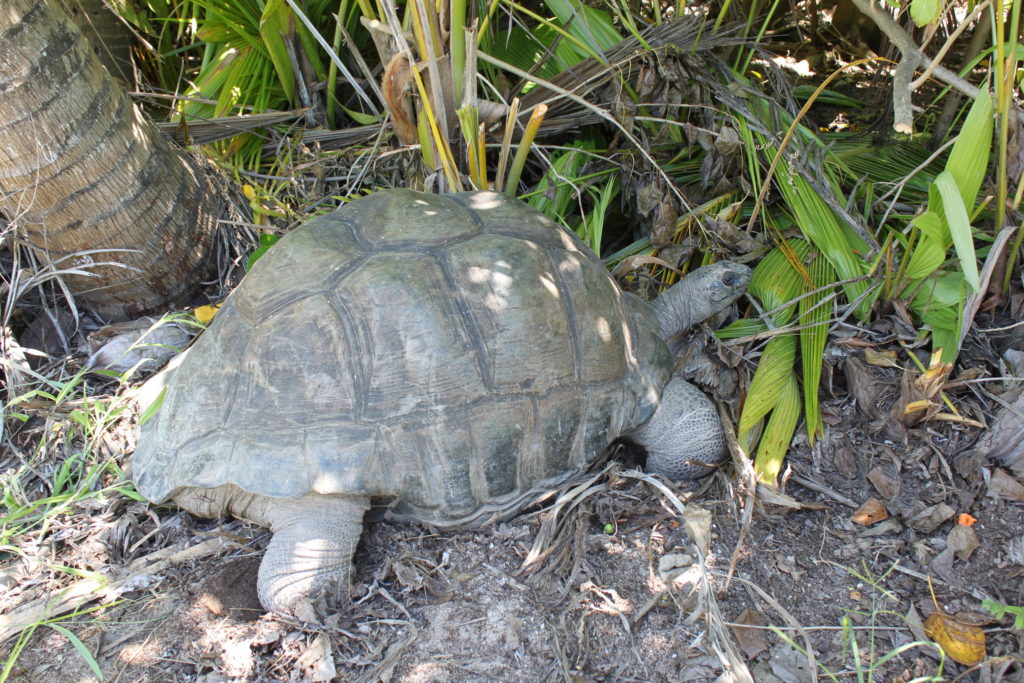
Esmeralda, Gerwin Sturm, CC BY 2.0, Flickr
This is probably one of the more well-known and interesting facts about Seychelles and forms part of its uniqueness. The Coco De Mer palm is endemic to the islands of Seychelles and even then, can only be found naturally on the islands of Praslin and Curieuse. The seed from these palms are the largest in the world and enjoy famed attention due to their suggestive form. It is because of this that people once believed that these trees made passionate love on stormy nights when no one was watching.
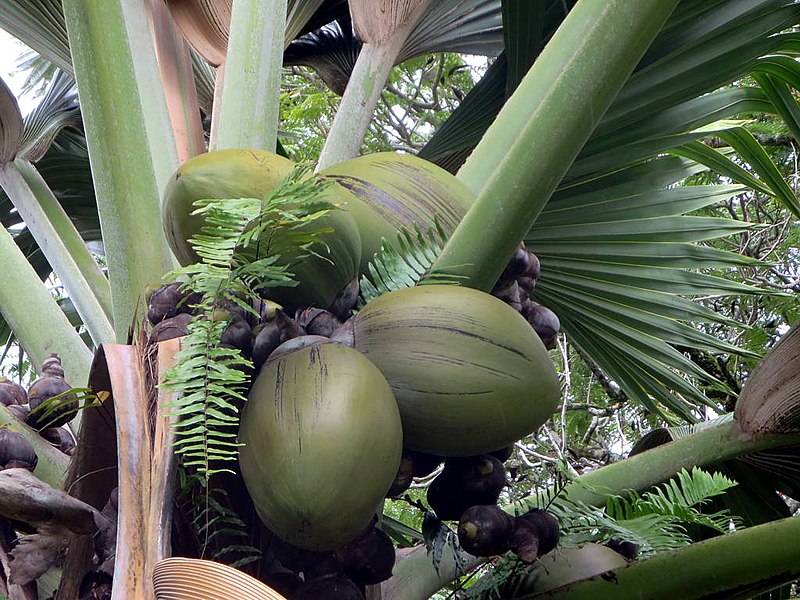
Coco De Mer, David Stanley from Nanaimo, Canada, CC BY 2.0, via Wikimedia Commons
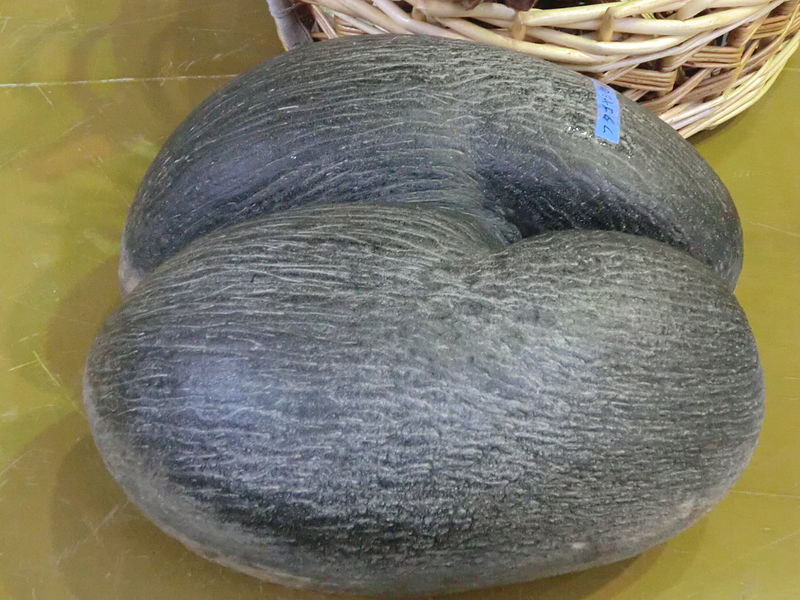
Nut from Coco De Mer, Nissy-KITAQ, CC BY-SA 3.0 via Wikimedia Commons
Both the Vallée De Mai and the Aldabra Atoll are UNESCO World Heritage Sites. The Vallée De Mai on Praslin, is home to the famous Coco De Mer palm (mentioned above), endemic to Seychelles. This natural forest has been preserved in its almost original state and is a very popular tourist attraction.
The Aldabra Atoll is one of Seychelles’ outer islands and the second-largest raised coral atoll in the world. The four main islands that make up the atoll enclose a shallow lagoon with an area of about 196km². It is also home to the world’s largest colony of giant tortoises.

Aldabra Shores, Seychelles News Agency, CC BY 4.0, via Wikimedia Commons
Before the first settlers arrived in Seychelles, it was frequented by pirates as a hideout. The infamous pirate, Olivier Levasseur, known as La Buse (the buzzard) is believed to have buried his treasure on Mahe. Over the years, a number of individuals have attempted to locate this treasure, with Bel Ombre being a favourite spot for this search.
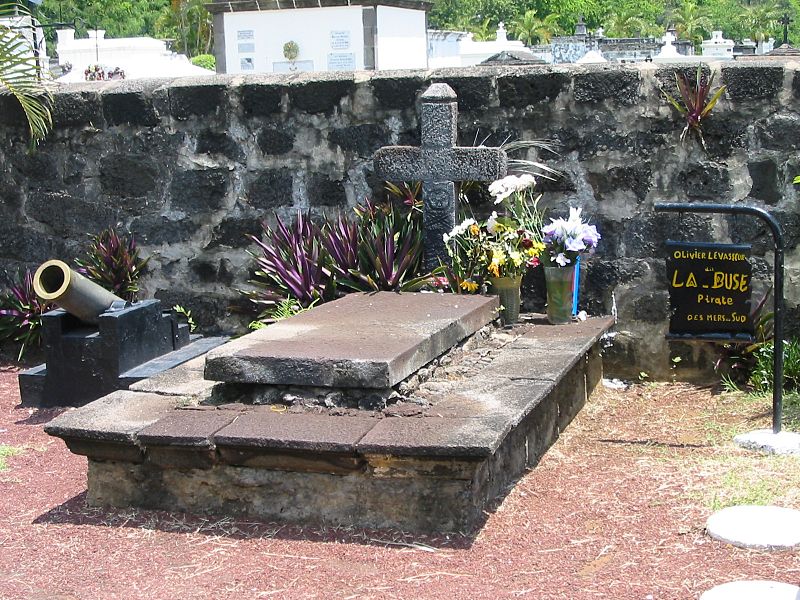
Grab Pirat La Buse Reunion St Paul, Jöran Kortmann, Public domain, via Wikimedia Commons
Along with the two UNESCO World Heritage Sites, the Vallée De Mai and the Aldabra Atoll, Seychelles has various other national parks, territories and reserves that are protected. All of these account for about 60% of Seychelles’ total land mass. This is a huge accomplishment for such a small nation and one of the most impressive facts about Seychelles. All of these efforts are an attempt to preserve the natural beauty of the islands and ensure the continued success of the many species calling the Seychelles home.
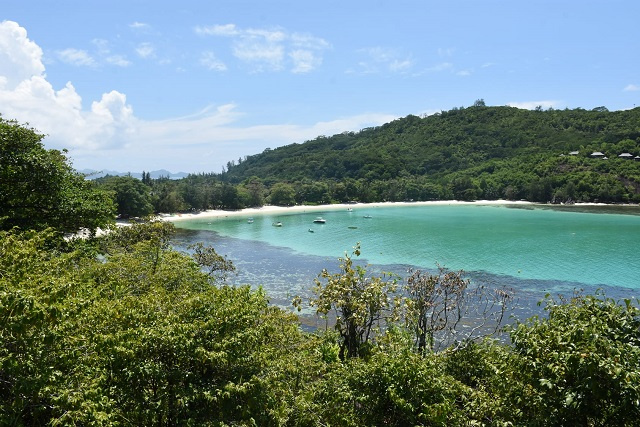
Port Launay Marine National Park, Seychelles Nation, CC BY 4.0, via Wikimedia Commons
The Seychelles remained uninhabited until the 18th century. In 1756, the French officially laid claim to Seychelles, bringing with them African slaves. Later, when the British took control, they too brought with them labourers from Asia. The population of Seychelles is thus made up of the descendants of these first settlers and is the reason for the rich mixture of cultures today.
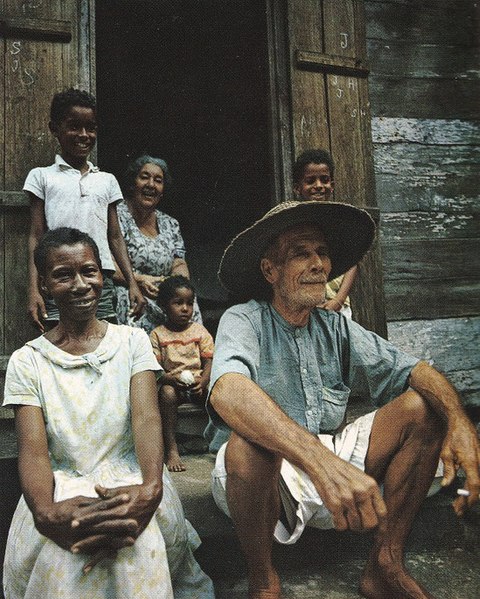
A Seychellois family at doorstep, Photography by Dino Sassi – Marcel Fayon, Photo Eden LTD, Public domain, via Wikimedia Commons
In total, Seychelles is comprised of 115 islands which are subdivided into granitic islands and coral islands. These are further subdivided into the inner islands and the outer islands. Altogether the 115 islands make up a total area of 455km², with most of them remaining uninhabited.
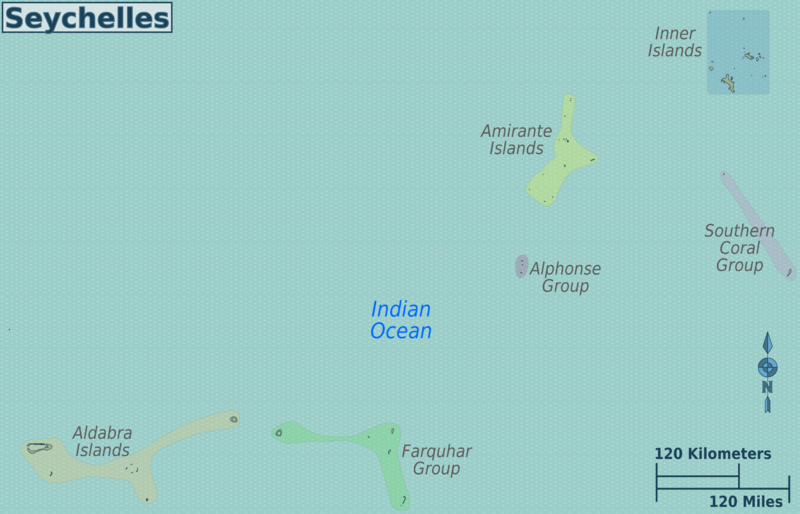
Seychelles Regions Map, Peter Fitzgerald, CC BY 2.0, via Wikimedia Commons
English, French and Seychellois Creole are all official languages of Seychelles. Seychellois Creole is largely a French-based creole with some similarity to Mauritian Creole.
Probably one of the lesser-known facts about Seychelles is that the island of Curieuse was once used as a leper colony. From 1829, it housed a number of lepers in quarantine. You can still see the remains of the leprosarium on the island. In addition, the Doctor’s House, built in 1873, is now a National Museum.

Doctors House, Vicuna R, CC BY-SA 2.0, Flickr
| Cookie | Duration | Description |
|---|---|---|
| cookielawinfo-checkbox-analytics | 11 months | This cookie is set by GDPR Cookie Consent plugin. The cookie is used to store the user consent for the cookies in the category "Analytics". |
| cookielawinfo-checkbox-functional | 11 months | The cookie is set by GDPR cookie consent to record the user consent for the cookies in the category "Functional". |
| cookielawinfo-checkbox-necessary | 11 months | This cookie is set by GDPR Cookie Consent plugin. The cookies is used to store the user consent for the cookies in the category "Necessary". |
| cookielawinfo-checkbox-others | 11 months | This cookie is set by GDPR Cookie Consent plugin. The cookie is used to store the user consent for the cookies in the category "Other. |
| cookielawinfo-checkbox-performance | 11 months | This cookie is set by GDPR Cookie Consent plugin. The cookie is used to store the user consent for the cookies in the category "Performance". |
| viewed_cookie_policy | 11 months | The cookie is set by the GDPR Cookie Consent plugin and is used to store whether or not user has consented to the use of cookies. It does not store any personal data. |
These are really interesting facts! Those seeds are huge and that tortoise is massive. With 115 islands there’s a lot of room to explore.
It may be tiny, but yes, there’s definitely loads to discover.
Great, didn’t know some of them. We loved Seychelles 💙
So happy to hear that!